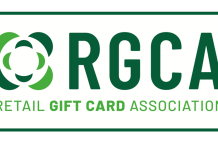Return fraud is a growing concern and costly challenge for many retailers. Losses to retailers from return fraud are astronomical, costing retailers billions of dollars every year. While it is crucial to enhance security and employee trainings to mitigate return fraud, it is also imperative to comprehend the routine behaviors and the techniques offenders use to conduct returns.
To better mitigate return fraud in a brick-and-mortar setting, the Loss Prevention Research Council (LPRC) conducted a series of offender interviews. The intent of the project? To understand the implications behind return fraud and the mechanisms by which return offenders circumvent store’s return policies and complete fraudulent returns.
Case Study: A Chicago ORC Ring
During the interview process, the LPRC researchers discovered an organized retail crime (ORC) ring based out of Chicago and were able to investigate this group closely to learn more about their return methods and routines.
The organization has been established for about four years and comprised of five to six people. The leader of the ring used to work for the loss prevention team of a drugstore. The organization operates under the notion that “big corporations rip off their employees and cheat people out of their money.” They therefore rationalize their unethical behavior by the belief that they are not taking from the people, but rather from immoral corporations.
Recruitment
The organization specifically targeted active cashiers of various retail stores. The technique by which the recruiters use to recruit members is to approach the store cashiers during a casual conversation, ask the cashier about their job and salary satisfaction, and tell them lies to attract them to the organization.
The leader of the group makes the final decision on whether to accept the candidate. The leader makes his decision based on observations of various tasks and seeks people who can most effectively and accurately complete these tasks under ten minutes. Tasks might include:
- A game of chess, to see how quickly and efficiently their brain would work. It didn’t matter if they won or lost.
- A request to map out the floor plan and lay out the place that the group needed to hit efficiently under two minutes. Candidates need to locate the cameras, identify where the team is needed, and select what they want to steal.
The ultimate goal of these exercises is to find someone who is:
- Upbeat, willing, and determined
- Able to communicate effectively
- Capable of articulating situations during a theft operation
The people who are recruited by this organization tend to share a set of beliefs regarding the immorality of large corporations. They believe their actions are justified because of this. Similarly, they view stealing as their “compensation package” (metaphor of the ledger) and regard it as their right to take some items for themselves at the expense of the company to justify the company’s unethical behaviors.
Retail Targets and Methods of Theft
The targeted stores include, but are not limited to drugstores, department stores, supermarkets, and big-box stores.
Typically, this group has access to an employee who works for the retailer from whom they plan to steal. The employee will have access to receipts, keys to merchandise, and access to the store’s floor map.
Methods of operation include:
- Sweeping merchandise off the shelves at the end of the night by working with a dishonest employee, and returning merchandise the next day using fake receipts. Fake receipts were obtained using a stolen register.
- Buying goods with counterfeit money with the help of a friend (employee) and returning the items the next day using receipts.
Rehearsal
This group streamlines their operation by conducting rehearsals and training. Rehearsals are often carried out in rural areas with limited or broken security features. In addition, the group reports that employees usually don’t care or pay attention to the store surroundings in those areas. Trial runs can sometimes be performed using empty lots of an abandoned church to make sure the team completes tasks efficiently.
Time Preference
The group reports boosting most often in the early summer and during buy-one, get-one-free (BOGO) sales periods. The group claims to accumulate five times more profits during BOGO sales because stores tend to have more merchandise on the shelves and are generally busier.
Store Evaluation
Pre-day store evaluation is often required by the organization for a “big job.” The evaluation includes scouting the store to identify camera position, product placement, greeters, secret shoppers, and people who check off receipts. Tools used by this organization include walkie-talkie apps, EAS tag removers, and counterfeit money.
Closing Thoughts
Offenders adopt various methods to commit return fraud, and it is not realistic to eradicate all existing problems or address all vulnerable areas. However, it is incumbent upon LP associates to reduce the opportunity for return fraud by implementing common-sense measures.
Many offenders point out that they specifically targeted a store when the return policies are liberal, employees are negligent and ignorant about fraudulent return behaviors and practices. Targeted improvements in return policies combined with better awareness training for employees could make it tougher for offenders to commit return fraud, and therefore mitigate this issue at retail stores. It is also important to create an environment that is conducive to honesty and loyalty, as employee theft and fraud present a challenge to many retailers.
This post was originally published March 25, 2019 and updated May 29, 2019





